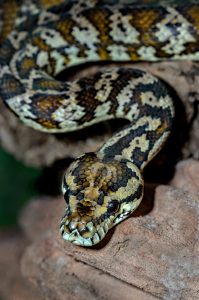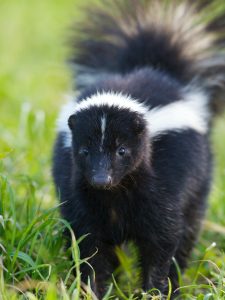What do snakes eat?
Snakes are carnivores, which means that they primarily eat other animals. In the wild, they will typically eat small mammals, reptiles, birds, and amphibians. Some of the favored prey for snakes include mice, rats, lizards, and frogs. While different snake species have different diet preferences, all snakes require protein-rich food sources in order to survive and thrive. Most snakes only eat every 5 days to 2 weeks as their food is only broken down slowly in their digestive systems. This is why they need very dense food that is high in calories to sustain them. Due to their gut bacteria, snakes are unable to digest plants properly and do not get enough caloric intake from them.

What do I feed a pet snake? What do snakes eat as a pet?
In captivity, snake owners can provide their pets with a variety of commercially available snake foods, such as frozen mice or live worms. It is advisable to consult a veterinarian specializing in reptiles to make sure that your snake is getting the proper nutrition.
What do garter snakes eat?
Garter snakes are opportunistic feeders, and their diet can vary depending on their location and the time of year. In general, garter snakes will eat small mammals, such as rodents or shrews, lizards, amphibians, fish, and insects.
Some garter snakes might even eat other snakes! Garter snakes usually hunt at night or during the early morning hours when their prey is most active. They will strike quickly at their target, using their sharp teeth to puncture the skin and inject venom. The venom will immobilize their prey and allow the garter snake to consume it whole.
While most garter snakes are not large enough to pose a threat to humans, a few species can deliver a painful bite when provoked. So if you see a garter snake, it is best to leave it alone and admire it from a distance.
What do baby garter snakes eat?
Baby garter snakes generally eat small insects, such as ants and crickets. However, they will also occasionally eat other small animals, such as frogs and lizards. If food is scarce, baby garter snakes may even turn to eating other snakes. As adult garter snakes typically eat larger prey, such as rodents and birds, it is only natural for them to do so.

Venomous snakes as pets?
Do venomous snakes make good pets? In short, the answer is no, they do not make good pets. Venomous snakes are highly dangerous and require special care and housing. If you are bitten by one, it can be fatal if you do not receive immediate medical treatment. For these reasons, we do not recommend keeping venomous snakes as pets. If you are interested in keeping a snake as a pet, there are many different species that make good pets, such as garter snakes, corn snakes, and king snakes.
It is important to do your research before purchasing a snake to make sure that you are getting a snake that is compatible with your lifestyle and that you are prepared to provide proper care for your new pet.
People are often scared of snakes because of their reputation as dangerous predators. However, snakes are typically very shy and reclusive creatures. In the wild, they will usually only attack humans if they feel threatened or when trying to defend themselves. If you see a snake outside, it is crucial to give it space and not try to handle it.

Venomous snakes in the US
1. Rattlesnakes
There are many different species of rattlesnakes, but all of them are venomous. The most common rattlesnake in the United States is the Western diamondback rattlesnake. Other species include the Eastern diamondback, the timber rattlesnake, and the sidewinder.
2. Copperheads
Copperheads are a type of pit viper and are therefore venomous. They get their name from their reddish-brown coloration. Copperheads are found across much of the southeastern United States.
3. Cottonmouths or water moccasins
Cottonmouths, also known as water moccasins, are a type of pit viper found in the southeastern United States. They are venomous and get their name from the white coloration of their mouths.
4. Coral snakes
Coral snakes are a type of elapid snake and are therefore venomous. They are brightly colored and are found in the southeastern United States. Coral snakes are often confused with king snakes, which have similar coloration but are not venomous. However, you can identify coral snakes by the order of their colors – red, yellow, and black – while king snakes have the order black, yellow, and red.
5. Sea snakes
Sea snakes are a type of elapid snake found in tropical waters. They are venomous, and most species have enough venom to kill a human. Sea snakes are not aggressive by default. They will only bite when they feel threatened.
Snakes are wild creatures and can hurt you, so it is best to stay cautious! Never get too close to snakes and never assume they are harmless or non-venomous because safety should always come first!






